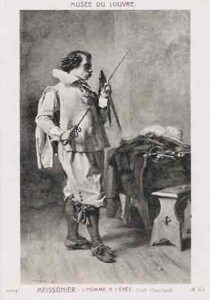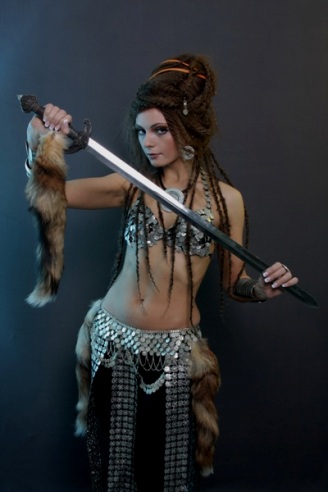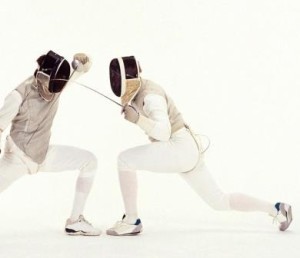The confrontation of the French and Italian fencing schools
 Starting from the middle of the XVII century, when the French shortened their epee, fencing with stabbing weapons began to progress rapidly in a variety of techniques, dexterity and speed of their application. From that moment, a sharp divergence of the French school (more progressive) and Italian (more conservative) begins. These discrepancies reached their peak by the end of the 19th century.
Starting from the middle of the XVII century, when the French shortened their epee, fencing with stabbing weapons began to progress rapidly in a variety of techniques, dexterity and speed of their application. From that moment, a sharp divergence of the French school (more progressive) and Italian (more conservative) begins. These discrepancies reached their peak by the end of the 19th century.
In France, from the second half of the 18th century, fencing has made rapid significant progress, clearly ahead of Italy. In 1736, the Frenchman Girard introduced the 8th and last defense, almost two centuries later than the 7th. In 1755, in the French Encyclopedia, the article “fencing” first talked about the need to introduce a fencing mask to prevent accidents. But 10 years passed before fencing masks were finally introduced.
In 1766, in Paris, a teacher of fencing Dane released a thorough work on the possession of knives, a significant part of which are exercises to teach techniques for withdrawing and capturing enemy weapons with the unarmed hand. At the moment, these techniques in fencing are considered prohibited.
The introduction of the mask gave a sharp impetus to the further technical and tactical improvement of fencing.
At the same time, in France, a struggle was emerging between two schools: the old classical (Bertrand, La Boissier, Cordenoy, Bondi, etc.) and the practical school, the founder of which was the famous fighter of France at the beginning of the 19th century, Lafoger. His famous battle in Paris in 1816 with Count Bondi, the best fencer in Paris at that time, constituted an era in the history of fencing. Lafoger was short, but unusually mobile.
The provincial fencing teacher Lafoger, unknown at that time, came to Paris to test his theory in practice in a battle with the best representative of the classical school – Count Bondi. His brilliant victory in the presence of a huge number of spectators and all fencing authorities of that time made a sensation. In 1730, academician Ernst Leguwe, an adherent of the old school, wrote in his article “The Tournament of the 19th Century” the following: “The sharp reaction of realism against romantic academicism in literature and painting could not but affect fencing. Gomard, Charlemagne, Cordenoy and others could see with true regret the emerging new school, which, caring only for the injection, rejected the demands of grace and grace of movement, as useless and funny. In vain Bertrand, our incomparable Bertrand, proved with his lessons and personal example that at the same time one can be the most graceful and most powerful fighter; every day the new school won the right to citizenship. Fencing from now on remains, no doubt, a useful, entertaining exercise, but this is no longer art, for “there is no art where there is no beauty.”
During this period of struggle in the direction of French fencing, the principle of rationalization, the determination of each movement and action is the basis of fencing technique and tactics. The first of the most respected innovators in this regard was Jacob. He insisted on the introduction of counter-riposts and lengthy fighting phrases, which is the characteristic and most difficult feature of the French school.
Italian fencing from the end of the eighteenth and almost the entire nineteenth century is under the influence of the French. Introducing their methods, the French primarily took care to introduce their teachers and their weapons (without a diameter and with a guard in the form of an eight). Arms and methods of holding them changed the technique, methodology and tactics of fencing in northern Italy (in the occupied territories). In Italy, three schools were formed: the North Italian under the leadership of Radaelli, which became the main position of the French school, the South Italian, led by the family of fencers of Paris, retained Italian weapons (with a diameter and martingale), and Italian equipment and a secondary school led by Marcianni, who occupied the most advantageous position, taking the most valuable of both schools. In 1879, in Italy, a government commission was organized to combine teaching methods, which supported nationalist tendencies and in 1883 chose the system of the professor of the Neapolitan Academy, Masaniello Parise.




